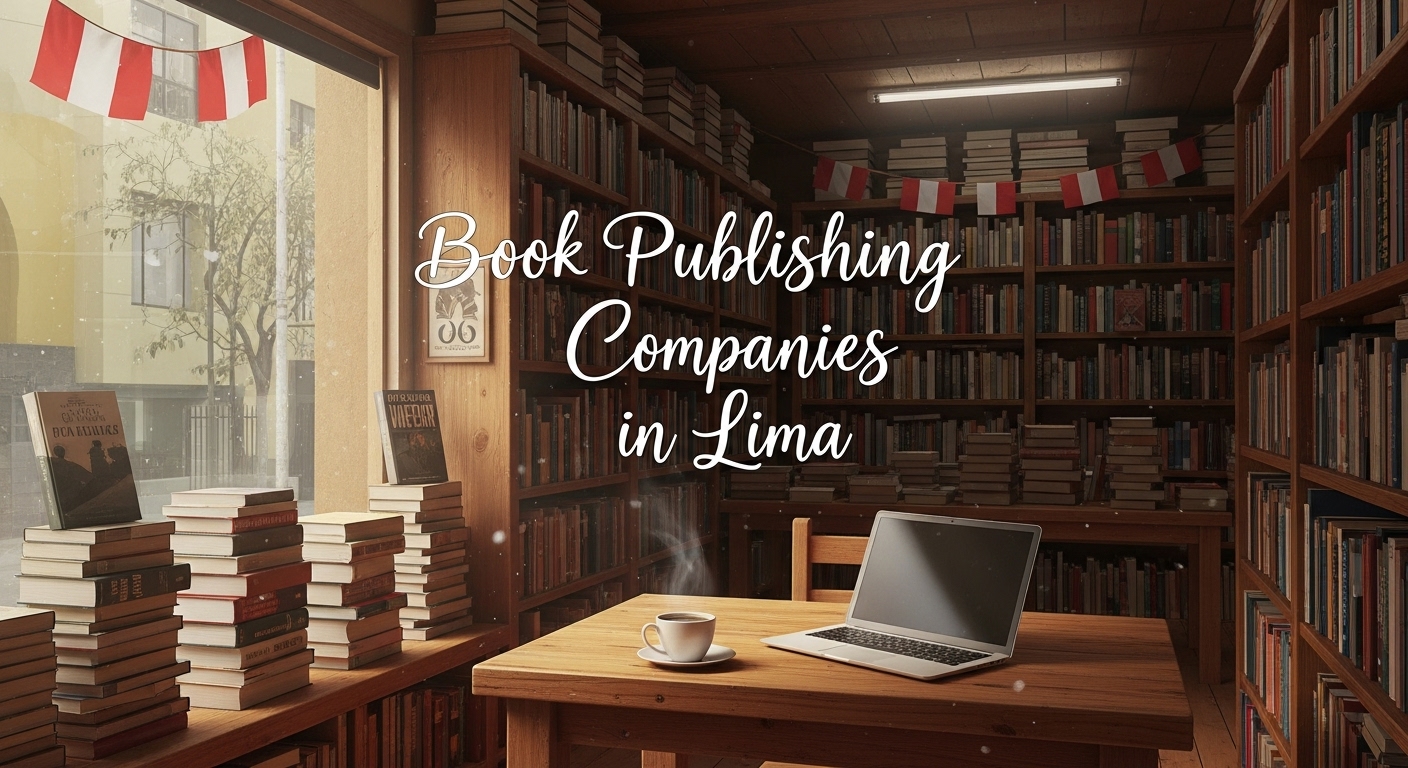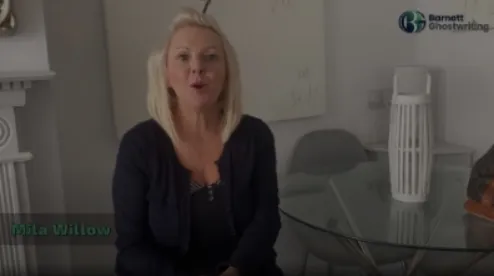
In 2025, Lima’s publishing scene stands as a dynamic intersection between tradition and innovation. Peru’s capital has always been the cultural and literary pulse of the nation, nurturing voices that blend the country’s deep history with modern perspectives. Whether through multinational publishers, university presses, or independent imprints, Lima’s literary ecosystem offers a platform for every kind of author — from debut novelists to academic scholars.
1. Barnett Ghostwriting
While traditionally known for ghostwriting and author assistance, Barnett Ghostwriting has evolved into a full-scale publishing service in 2025. It bridges the gap between content creation and publishing, catering to authors seeking professional support from concept to release.
Primary Areas:
- Provides complete writing, quality editing, and publishing assistance.
- Focuses on author-driven projects that merge creativity with professionalism.
- Offers design, formatting, and publishing coordination to help books reach shelves efficiently.
Distinctive Quality:
Barnett Ghostwriting operates as both a creative hub and a technical support team. For emerging authors or those who prefer a guided publishing journey, the company represents a modern, flexible alternative to traditional publishing.
2. Penguin Random House Grupo Editorial Perú
As part of one of the world’s largest publishing groups, Penguin Random House Perú brings global standards to Lima’s literary environment. It continues to dominate the trade publishing scene, releasing both Peruvian authors and translated international bestsellers.
Primary Areas:
- General fiction, literary works, and contemporary non-fiction.
- Children’s and young adult titles with strong narrative appeal.
- Translated literature from English, French, and Portuguese markets.
Distinctive Quality:
Its wide distribution network and polished editorial quality give authors unparalleled exposure throughout Latin America. Penguin Random House’s presence ensures Lima remains a key node in the global publishing map.
3. Editorial Planeta Perú
Editorial Planeta has built an enduring reputation across Latin America, and its Peruvian division continues to lead the market in 2025. It combines mass-market appeal with deep cultural engagement, releasing both local and international authors who shape modern Spanish-language literature.
Primary Areas:
- Publishes leading voices in fiction, self-help, and investigative journalism.
- Focuses on high-quality print editions with strong cover design aesthetics.
- Maintains close collaboration with local bookstores and book fairs in Lima.
Distinctive Quality:
Planeta’s long-term investment in Peruvian authors has strengthened the nation’s voice in the global Spanish-speaking literary sphere, encouraging the professionalization of the local publishing industry.
4. Fondo Editorial de la Pontificia Universidad Católica del Perú (PUCP)
No overview of Lima’s publishing landscape would be complete without mentioning PUCP’s Fondo Editorial. This university press remains a cornerstone of academic and cultural publication in the city.
Primary Areas:
- Social sciences, philosophy, anthropology, and literature.
- Academic monographs and research-driven titles.
- Cultural studies and translations of significant theoretical works.
Distinctive Quality:
The press is admired for its scholarly rigor and high editorial standards. Its publications serve as key references in Peruvian academia, cementing Lima’s reputation as an intellectual capital.
5. Fondo Editorial del Congreso del Perú
A unique aspect of Lima’s publishing ecosystem is the presence of institutional publishers like the Fondo Editorial del Congreso. Beyond politics, this press preserves historical records, policy papers, and national archives in accessible formats.
Primary Areas:
- Publishes legal texts, cultural studies, and political analysis.
- Serves as a bridge between governance and public education.
- Promotes transparency and historical documentation.
Distinctive Quality:
This institution ensures Peru’s legislative and cultural memory remains preserved for researchers and citizens alike — a vital mission in maintaining a nation’s intellectual continuity.
6. Ediciones Copé
Managed by Petroperú, Ediciones Copé embodies Peru’s corporate-backed commitment to culture and arts. Its literary contests and anthologies have introduced countless new writers to the national audience.
Primary Areas:
- Literary anthologies and poetry collections.
- Prize-winning fiction and essays.
- Cultural heritage and art-focused titles.
Distinctive Quality:
Through initiatives like the Copé Awards, this publisher nurtures Peruvian talent and supports the country’s literary future, making it one of the most respected cultural imprints in Lima.
7. Editorial Norma Perú
Editorial Norma is a trusted name in educational and children’s publishing. Its Lima branch maintains a strong presence in schools, libraries, and the children’s literature sector.
Primary Areas:
- Textbooks for primary and secondary education.
- Illustrated storybooks and early readers.
- Teacher’s guides and learning resources.
Distinctive Quality:
Norma’s books shape the learning experience of millions of Peruvian students. Their editorial approach balances pedagogy with creativity, helping education and storytelling converge.
8. Peisa
Founded in the 1960s, Peisa is among Lima’s oldest independent publishing houses. Its catalogue is a vibrant mix of contemporary fiction, poetry, essays, and reprints of classic Peruvian authors.
Primary Areas:
- Prioritizes Peruvian authors and national identity.
- Known for elegant design and high production values.
- Encourages new voices while preserving literary heritage.
Distinctive Quality:
Peisa’s commitment to Peruvian literature has made it both a cultural institution and a literary home for generations of writers seeking authenticity and artistic integrity.
9. Ediciones SM Perú
Another strong player in Lima’s educational and children’s publishing market is Ediciones SM. It merges global expertise with local educational insight, creating books that inspire curiosity and creativity among young readers.
Primary Areas:
- Educational series aligned with national curricula.
- Illustrated storybooks and early learning materials.
- Bilingual titles that promote multicultural education.
Distinctive Quality:
By fostering a love of reading from a young age, Ediciones SM plays a pivotal role in shaping Peru’s next generation of thinkers and storytellers.
10. Editorial Cuerpo de la Letra
Completing the list is Editorial Cuerpo de la Letra, a vibrant independent publisher that has become synonymous with innovation in Lima’s literary circles. It challenges traditional publishing norms with its modern aesthetic and fearless editorial line.
Primary Areas:
- Contemporary fiction, poetry, and experimental prose.
- Translations of underrepresented authors.
- Culturally driven projects and creative collaborations.
Distinctive Quality:
Cuerpo de la Letra provides a platform for authors whose voices fall outside mainstream expectations. Its bold approach has revitalized Lima’s indie publishing scene and attracted younger audiences to literature.
Conclusion
In 2025, Lima’s book publishing industry reflects both its cultural depth and its global aspirations. From the full-service approach of Barnett Ghostwriting to the academic excellence of PUCP and the creative experimentation of Cuerpo de la Letra, every company contributes a distinct thread to Peru’s literary fabric.
For writers, Lima offers opportunity and diversity — a city where your words can find their form, your story its audience, and your ideas a place to belong. Whether you seek the reach of a global brand or the intimacy of an indie press, the publishing houses of Lima are ready to bring your voice to the world.
Estimated Publishing Costs in Lima (2025)
| Publisher | Type | Estimated Cost (USD) | Best For |
| Barnett Ghostwriting | Hybrid / Assisted | $2,000 – $7,000 | Authors needing full-service publishing |
| Penguin Random House Perú | Traditional | $0 | Established, agented authors |
| Editorial Planeta Perú | Traditional | $0 | Commercial and mainstream writers |
| PUCP Fondo Editorial | Academic | $500 – $2,000 | Scholars and researchers |
| Ediciones Copé | Cultural / Literary | $0 – $500 | Poets and literary writers |
| Editorial Norma Perú | Educational | $0 | School and children’s authors |
| Peisa | Independent | $0 – $1,500 | Peruvian literary authors |
| Cuerpo de la Letra | Indie / Hybrid | $500 – $2,500 | Experimental and indie writers |
FAQs About Publishing in Lima 2025
Q1. How can I make my book popular in Lima?
Promote through social media, book fairs like FIL Lima, and collaborate with local bookstores to gain visibility.
Q2. How can I become a bestselling author in Peru?
Focus on professional editing, choose a reputable publisher, and invest in consistent marketing and reader engagement.
Q3. What is the average cost of publishing a book in Lima?
Depending on the model, it ranges between $500 and $7,000, with hybrid publishers typically charging the most.
Q4. Can new authors get published by major Lima publishers?
Yes, but it’s competitive—submit a polished manuscript or query letter and consider starting with smaller independent presses.
Q5. How long does it take to publish a book in Lima?
From editing to print, the process usually takes 4 to 12 months, depending on publisher size and editorial scope.





